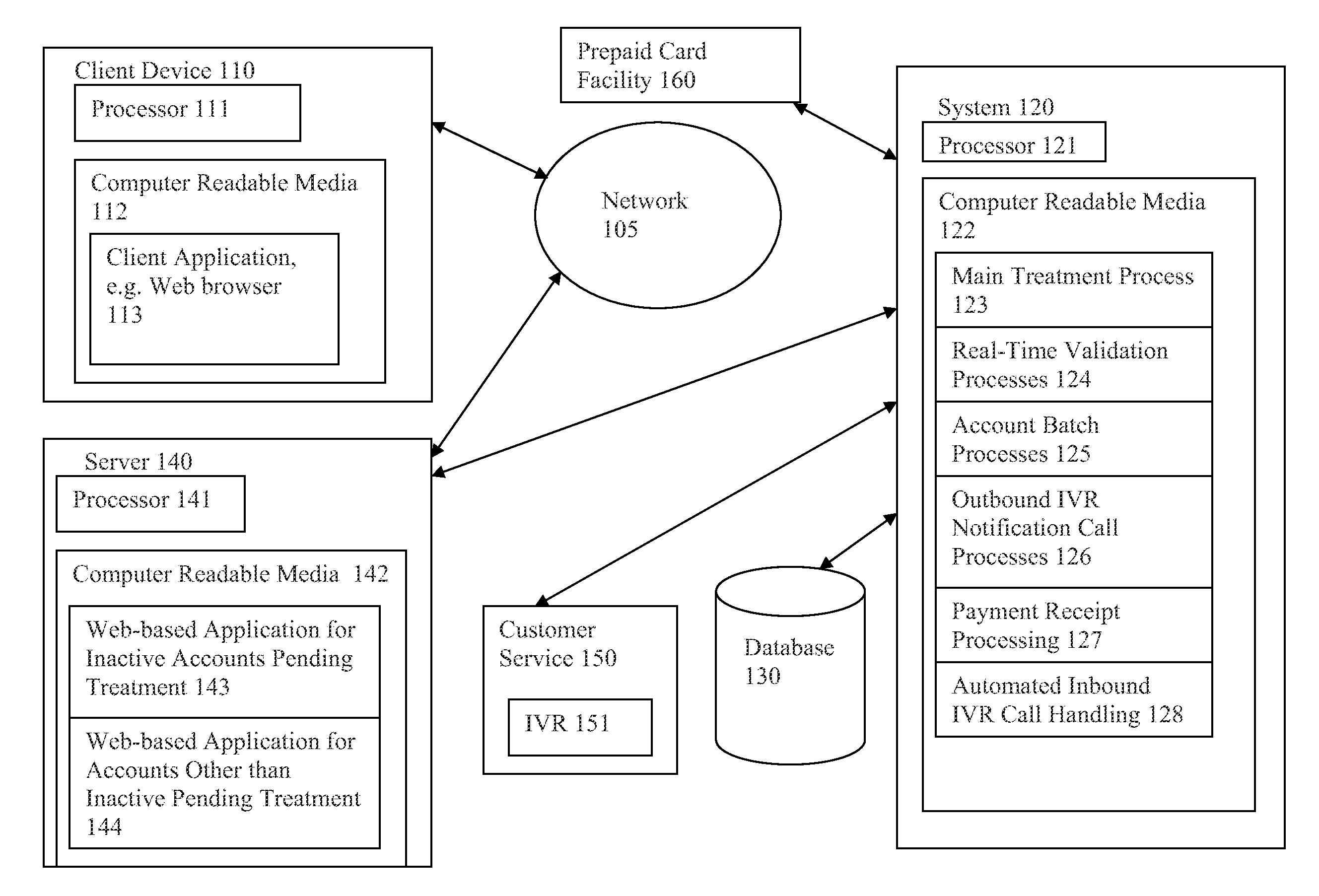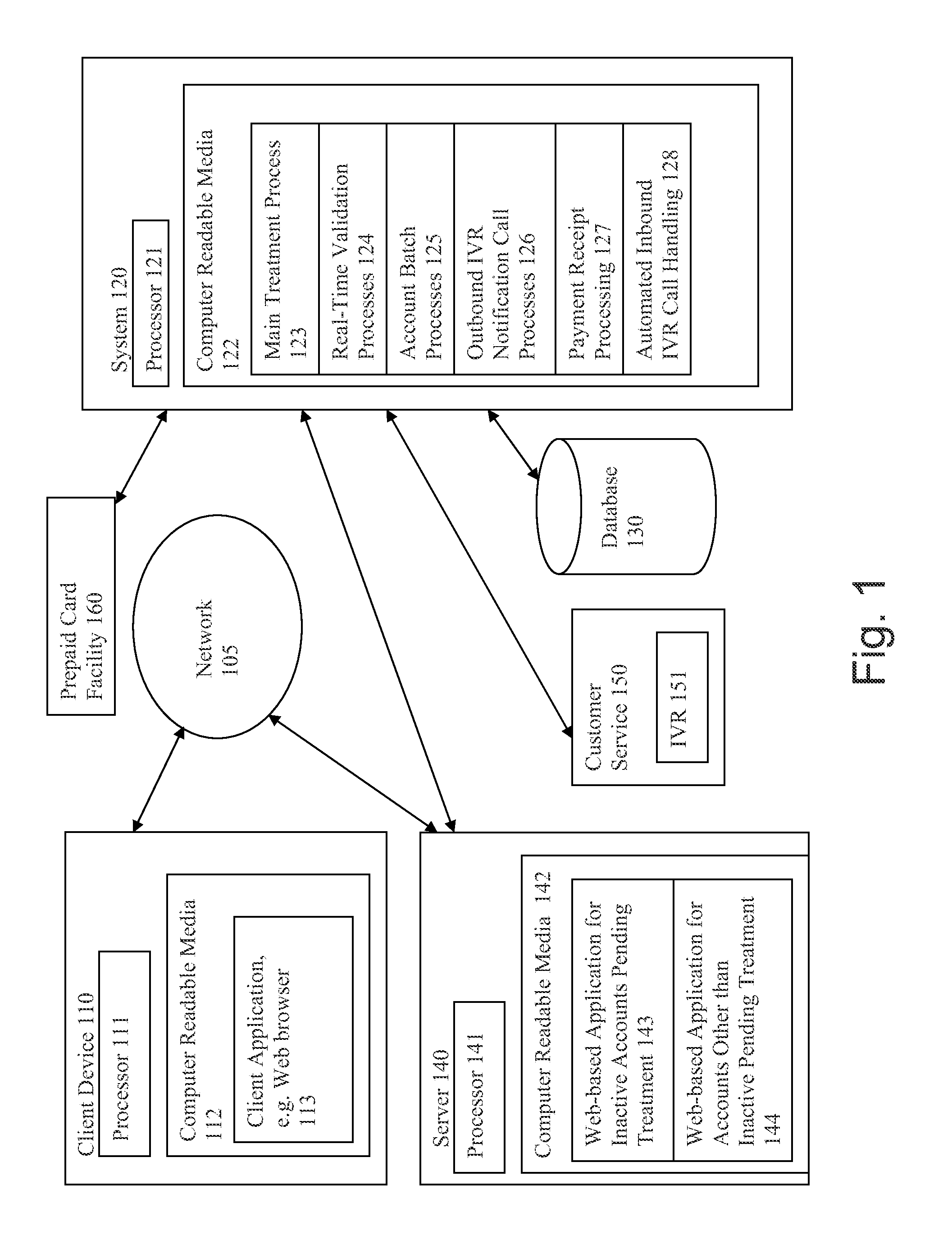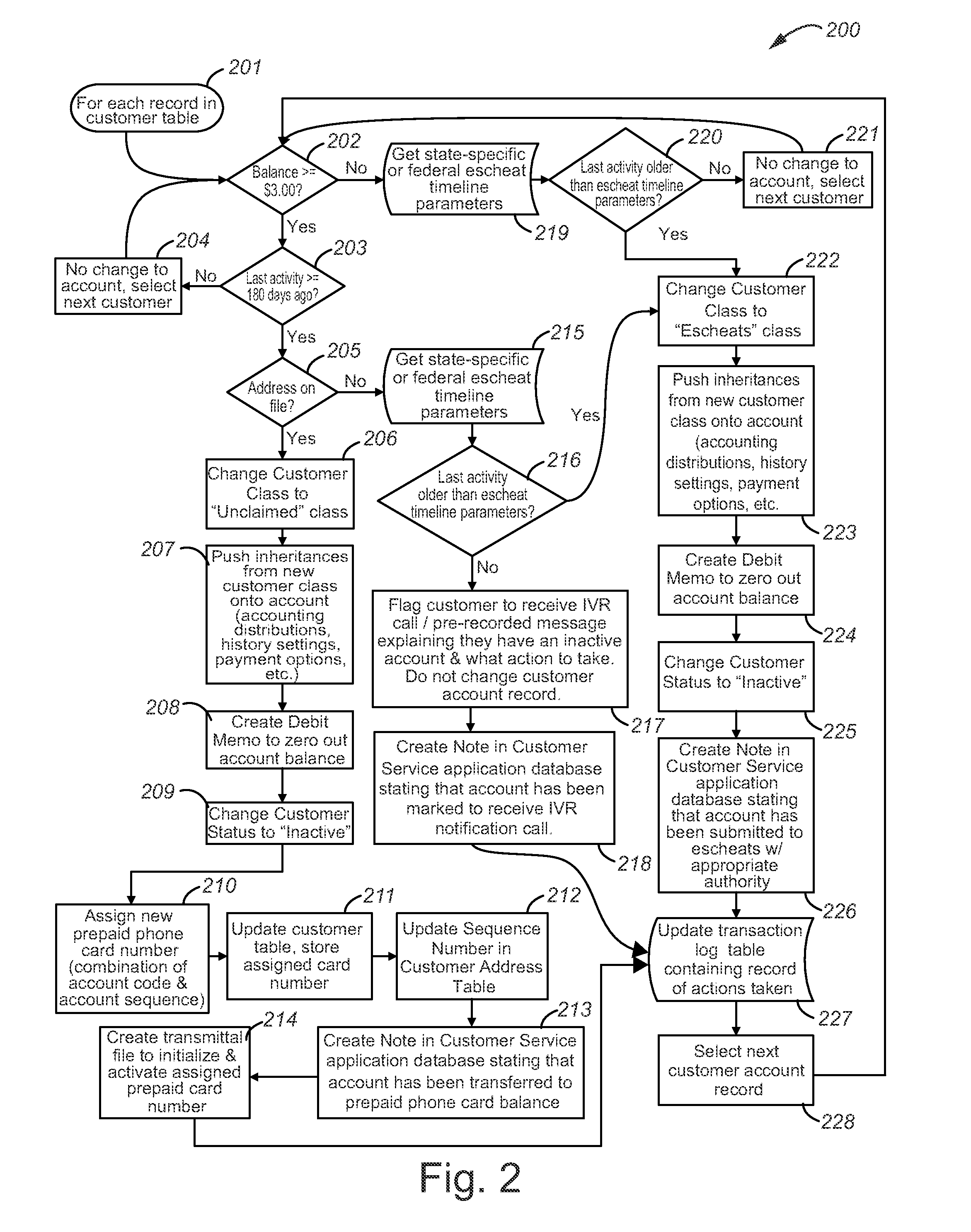Systems and methods for treatment of inactive accounts
a technology for inactive accounts and systems, applied in payment schemes/models, instruments, data processing applications, etc., can solve problems such as confusion, inequity, and frequent errors in the recovery of telephone billing accounts that have gone dormant, and achieve the rate at which local exchange carriers (lecs) and wireless carriers re-establish their services
- Summary
- Abstract
- Description
- Claims
- Application Information
AI Technical Summary
Benefits of technology
Problems solved by technology
Method used
Image
Examples
Embodiment Construction
[0034]Detailed embodiments are disclosed herein. However, it is to be understood that the disclosed embodiments are merely exemplary and that different embodiments are possible. The figures are not necessarily to scale, and some features may be exaggerated or minimized to show details of particular components. Therefore, specific structural and functional details disclosed herein are not to be interpreted as limiting, but merely as a basis for the claims and as a representative basis for teaching one skilled in the art to variously employ the present disclosure.
[0035]An exemplary embodiment provides for the appropriate treatment, disposition, and when appropriate restoration of telecommunications billing accounts that have gone dormant by automatically scanning customer accounts to identify dormant accounts and executing appropriate treatment actions in accordance with pre-defined parameters. FIG. 1 illustrates an exemplary system comprising a main system 120 with a processor 121 an...
PUM
 Login to View More
Login to View More Abstract
Description
Claims
Application Information
 Login to View More
Login to View More - R&D
- Intellectual Property
- Life Sciences
- Materials
- Tech Scout
- Unparalleled Data Quality
- Higher Quality Content
- 60% Fewer Hallucinations
Browse by: Latest US Patents, China's latest patents, Technical Efficacy Thesaurus, Application Domain, Technology Topic, Popular Technical Reports.
© 2025 PatSnap. All rights reserved.Legal|Privacy policy|Modern Slavery Act Transparency Statement|Sitemap|About US| Contact US: help@patsnap.com



